Photographer's focus on city's children after WW2
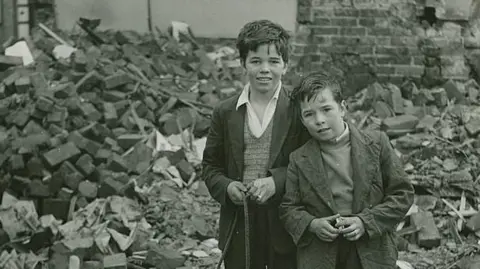 Estate of John Blakemore provided by Coventry University
Estate of John Blakemore provided by Coventry UniversityA photographer who experts in the field said "inspired a generation" has been remembered after his death for his first efforts in the city of his birth.
Born in Coventry in 1936, much of John Blakemore's initial work centred there following the end of World War Two.
His pictures of the Hillfields area of the city, where he lived as a child, were some of his earliest work as a photographer.
He took them fresh off the back of his National Service in Libya, which was where he first discovered his love for photography.
In Coventry itself at the time, having been severely damaged by the Blitz, the area was going through redevelopment, replacing some of its Victorian terraced streets with tower blocks.
Many of his pictures featured residents living in the area, especially children.
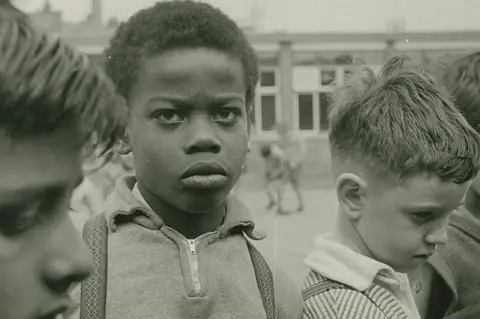 Estate of John Blakemore provided by Coventry University
Estate of John Blakemore provided by Coventry University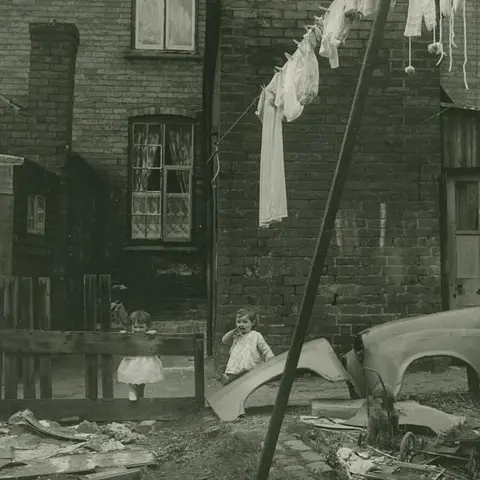 Estate of John Blakemore provided by Coventry University
Estate of John Blakemore provided by Coventry UniversityDr Ben Kyneswood, associate professor in digital heritage and culture at Coventry University, used the images for an exhibition titled Imagine Hillfields.
"Hillfields in 1964 was still much like it was after the bombs of 1940," he said.
"Protracted redevelopment plans by a council focused on the city centre meant residents lived in poor conditions.
"Kids played in bombed houses on derelict land for over 25 years after the war."
Speaking of the more recent exhibition, held in 2015, he said: "Our ambition was to show Hillfields as a dynamic and interesting place and challenge some of the stigma."
The photographer contributed some of his images for Coventrians to share on the University's Coventry Digital website.
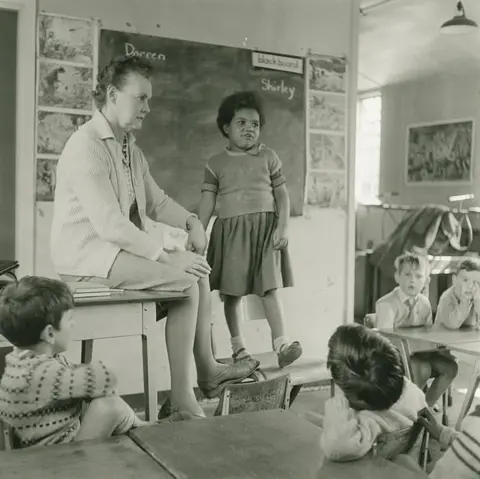 Estate of John Blakemore provided by Coventry University
Estate of John Blakemore provided by Coventry University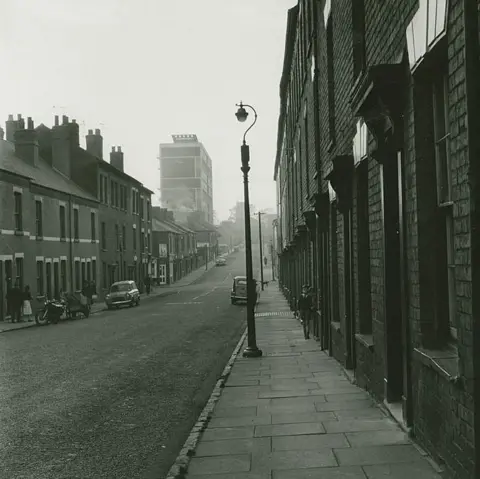 Estate of John Blakemore provided by Coventry University
Estate of John Blakemore provided by Coventry UniversityMr Blakemore died on 14 January after a short illness aged 88.
Described by the Centre for British Photography as "one of the leading photographers of landscape and nature in the world", after his death the Royal Photographic Society hailed his work as "beautiful, meticulously executed and thoughtful".
Speaking of the late photographer Dr Kyneswood, director of Coventry Digital, said: "He was the best printer in the UK for many years and published books on how to photograph and print like him.
"His landscapes and tulip photographs are very sought after.
"In later life, he turned to bookbinding, creating small, handmade books which likewise were very much sought after."
 Estate of John Blakemore provided by Coventry University
Estate of John Blakemore provided by Coventry UniversityFollow BBC Coventry & Warwickshire on BBC Sounds, Facebook, X and Instagram.
